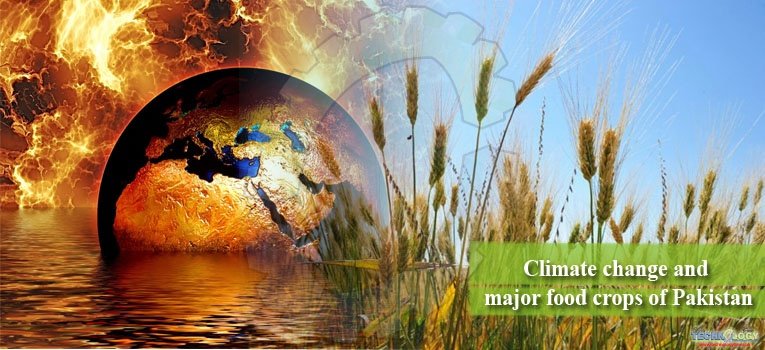Change in climate is mainly attributed to the unabated increase in greenhouse gases, including fluorinated gases, carbon dioxide, methane, and nitrous oxide, which bring changes in rain pattern, temperature, and negative effects on water and land resources, floods, and droughts.

- Why climate change is affecting agriculture in Pakistan?
Climate change is considered to be a global phenomenon; however, its impacts are more widely felt in the developing countries, due to their greater vulnerabilities and lesser ability to mitigate the effects of climate change. Because most developing nations—including Pakistan—are agriculture-based economies, their agricultural sector is affected the most due to direct exposure to nature.
Therefore, the major impact of climate change is on agricultural production due to changes in rain pattern, temperature, floods, droughts, and negative effects on water and land resources. In the developing states (such as Asia and Africa), the latest work has progressively considered the impacts of climate change on agricultural production.
- Food security and water availability
Food security and water availability are highly vulnerable to the rapidly changing climate. During the summer season, most of the climate models expected that rainfall will increase. The Himalayan glaciers (75%) are melting, and will disappear by 2035. The reduction or escalation in the intensity may result in droughts and floods, respectively.
- Climate change and food production limitations
Climate change will affect crop productivity, and can thus cause food security problems. It has been expected that global warming will increase yields due to “fertilizer effect”, but will influence poor farmers negatively. For example, countries closer to the equator will have reduced production due to global warming.
African countries will experience extreme droughts and a further shortage of food. If climate change affects the productivity of the agriculture sector in the lower-income countries of Asia or Africa, a large number of people will be at risk, and the problem of food insecurity will increase.
Climate change is the main driver of food security in the developing world, because it affects the productivity of the agriculture sector, its stability, and other components of the food system, including storage, access, and utilization.
- Climate change distribution to different regions of world
Generally, climate change has minor effects on global food production, but these effects are unevenly distributed geographically. Most of the losses are suffered in lower-income countries, such as those in arid and sub-humid South Asia and Africa. These regions are engaged in subsistence agriculture, and are not technically sound or financially strong enough to abate the negative impacts of climate change. Moreover, they have almost no potential for adaptation.
This adversely affects the people in these countries because of their dependence on agriculture for their livelihood. According to estimates of the Food and Agriculture Organization (FAO), the global number of undernourished people is 795 million. This shows a decline of nearly 200 million over the last 20 years.
Conclusion
Studies reveal that increasing temperature and the changing pattern of rainfall have a substantial Impact on food production. A recent study anticipates that the wheat production of South Asia will decline by 50% by 2050—equal to almost 7% of the global crop production.
The Peterson Institute states that agricultural production in developing countries will further fall between 10% to 25% and global warming will decrease the agricultural capacity of India by 40% if it continues unabated. Hence, climatic change causes serious threats to food security, negative impacts on productivity of different crops, the food supply and the cost of adoption of climatic change is high.
Therefore, food security has remained a prominent policy of Pakistan’s government. Wheat, rice, and maize are the main food crops, and sugar cane is the main cash crop of Pakistan. Therefore, food security policy mainly focuses on the production of these crops.
In light of the above deliberations, this study aims to examine the nexus between climatic change (maximum temperature, minimum temperature, rainfall, humidity, and sunshine) and the yield of major crops including wheat, rice, maize, and sugarcane.